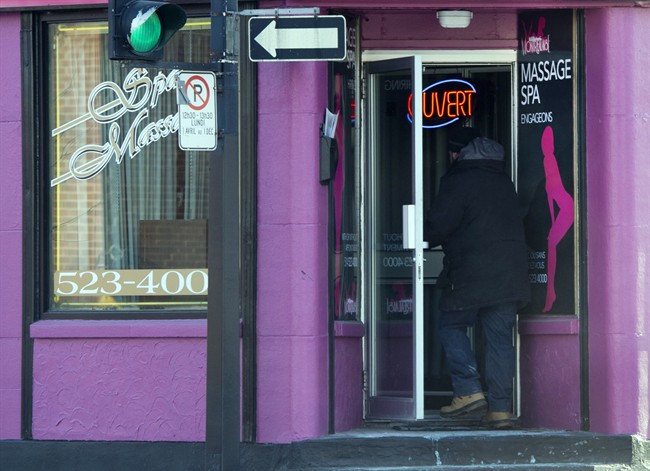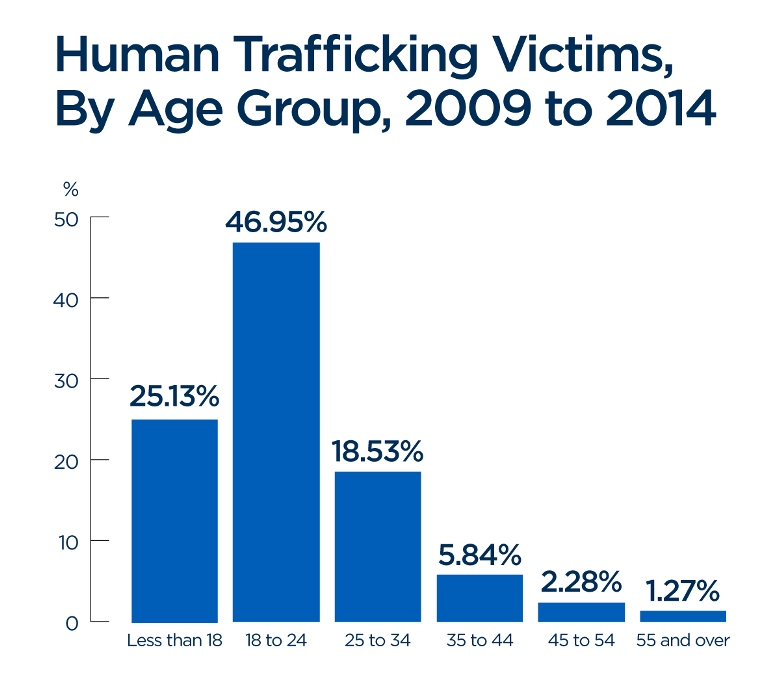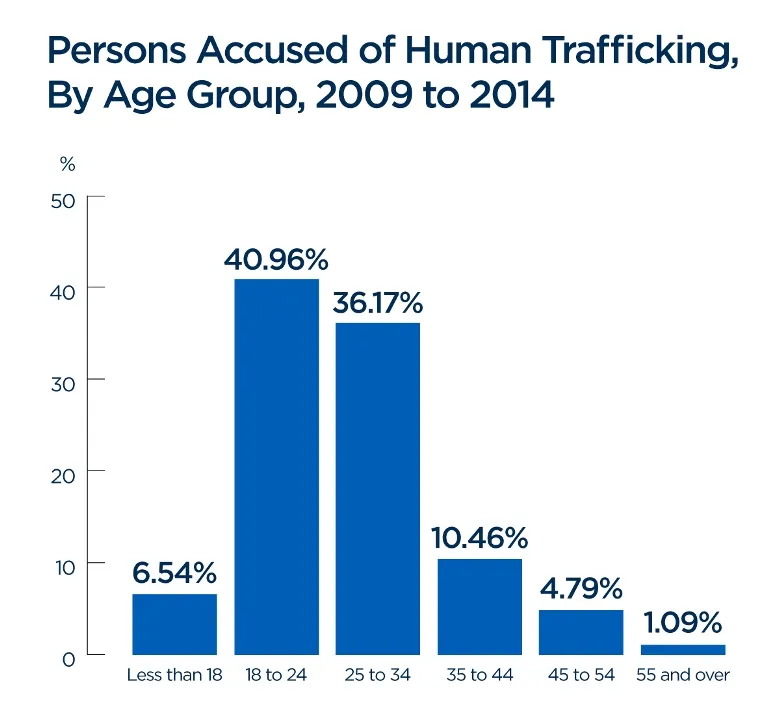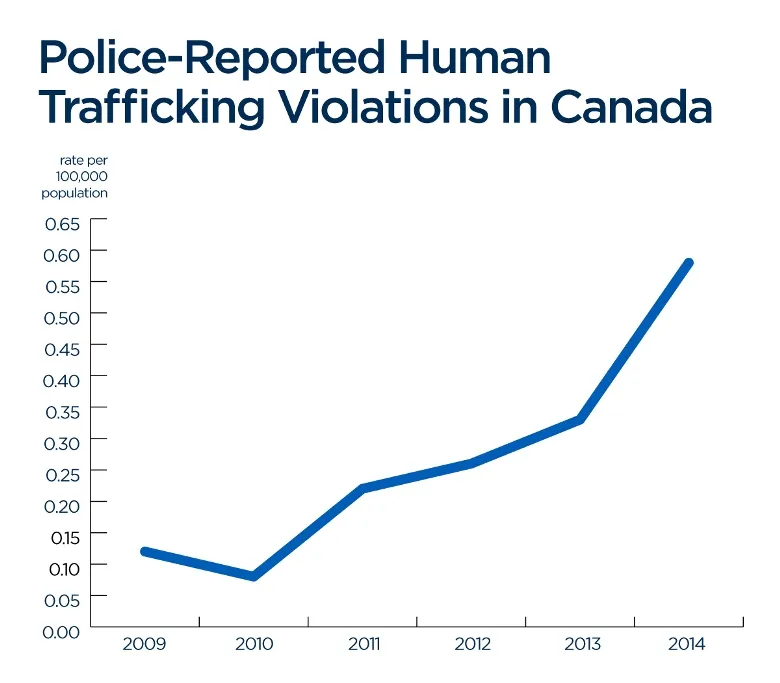People under the age of 18 made up about a quarter of recorded human trafficking victims in Canada between 2009 and 2014, new data reveals.

In a recent report, Statistics Canada noted that minors not only make up a significant portion of victims of forced labour or sex trafficking crimes, but that they also make up around seven per cent of the perpetrators.
The 18 to 24 age cohort was even more startling, with nearly 50 per cent of victims and 41 per cent of perpetrators falling into that range.
Nicole Barrett, a human-trafficking expert at the University of British Columbia’s Allard School of Law, said that some of those numbers are supported by her experience with the Canadian Women’s Foundation’s National Task Force on the Trafficking of Women and Girls.
Anecdotally, she said, 12 or 13 years old was a common age when young women were forced into the sex trade.
“Many are kids,” she said “I wasn’t surprised by the youth of the victims (in the Statistics Canada study), but by the youth of the perpetrators … in my mind, that wasn’t the picture that I had.”
Barrett said that much like the overall picture of human trafficking in Canada, the data related to the ages of victims and abusers is hobbled by the fact that only a small fraction of trafficking crimes are ever uncovered or reported.
Canada still isn’t doing a good job monitoring labour trafficking in particular (nannies, seasonal agricultural workers, etc.), she said, and human trafficking is still “vastly under-counted” for a variety of reasons.
Victims of trafficking often don’t perceive themselves as such, for example, and in the case of temporary workers from other countries, they may actually want to be trafficked because they still earn more in Canada than they would at home.
WATCH: ‘I will never be just a girl again’: victim of human trafficking in Calgary

There are also varying definitions of trafficking, Barrett explained, and prosecutors will often choose to charge the traffickers with other, related crimes (like drug possession or passport forgery) which are more likely to net a conviction.
READ MORE: Ontario promises to spend up to $72 million to fight human trafficking
“They’re difficult cases to prove,” Barrett said of trafficking charges. “Many of the people I spoke with in law enforcement said they’re also expensive cases.”
The numbers support this. Once human trafficking cases are reported to the police, Statistics Canada found, few make it all the way through the court system.
“From 2005/2006 to 2013/2014, there were 53 completed adult criminal court cases involving human trafficking, of which the majority resulted in a finding of stayed or withdrawn,” the report notes.
In total, between 2009 and 2014, Statistics Canada reported that there were 396 victims of police-reported human trafficking. The actual number of victims could be much, much higher, Barrett said.
A spike in cases
Overall, reported cases of human trafficking in Canada have spiked in recent years, the Statistics Canada data reveals. Violations (including sex trafficking and forced labour) shot up by 50 per cent between 2013 and 2014, but Barrett said that may not be an entirely bad thing.
READ MORE: Halifax police’s human trafficking awareness campaign nets tips, charges
“It’s likely that the police are more focused on investigating these cases, and part of the spike could be because of greater diligence in actually trying to prosecute human trafficking crimes,” she said.
The researchers behind the Statistics Canada report seemed to be thinking along the same lines, writing that:
“It is important to note that the increase in human trafficking violations may be influenced by improved methods of reporting, detecting and investigating these incidents.”
The study cites the Conservative government’s National Action Plan to Combat Human Trafficking as a possible catalyst for those “improved methods.”
The four-year plan, launched in 2012 under then-public safety minister Vic Toews, had an initial budget of $25 million.
It included increased support for victims, the combining of existing anti-trafficking efforts, and increased training and resources for law enforcement — including a nationally integrated team tasked specifically with fighting human trafficking.
The Conservatives also placed new restrictions on temporary foreign worker permits, denying access to anyone who comes to Canada to work as a stripper, an escort, or in a massage parlour.





Comments